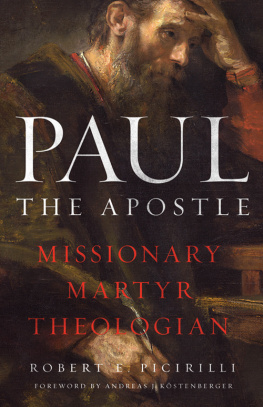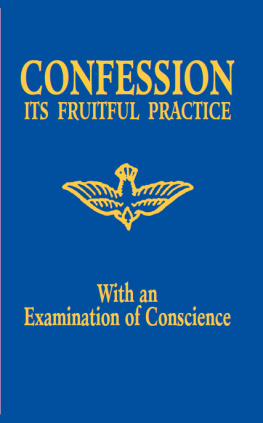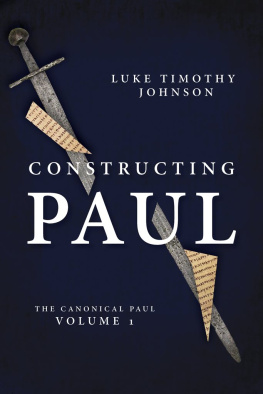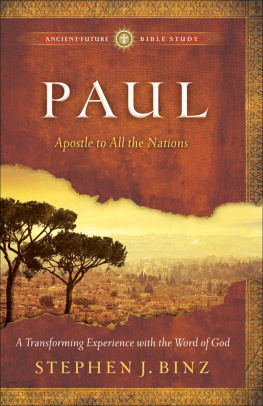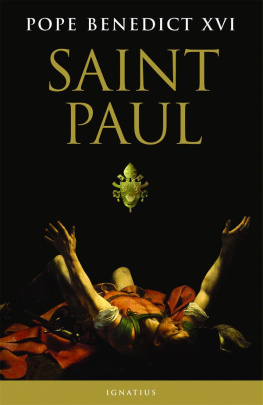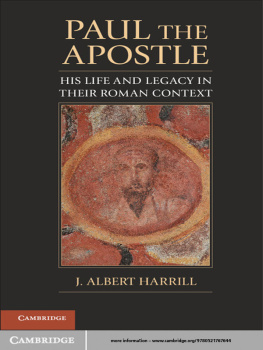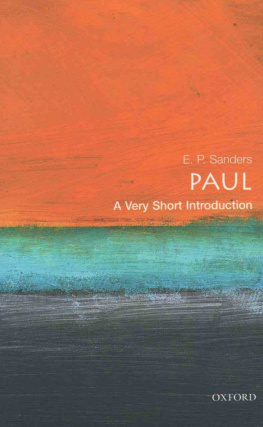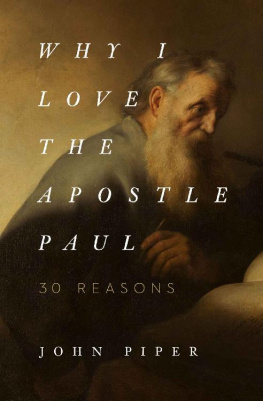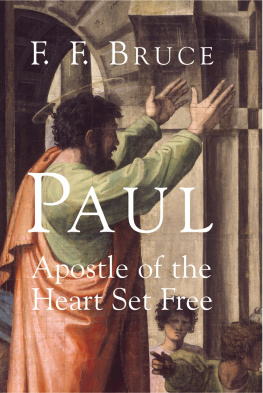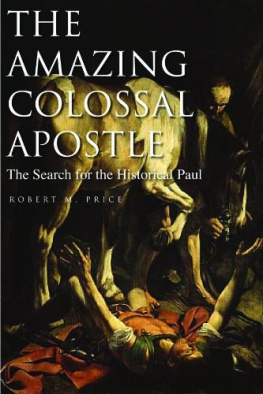Table of Contents
Pagebreaks of the print version
Guide


1986, 2017 by
ROBERT E. PICIRILLI
All rights reserved. No part of this book may be reproduced in any form without permission in writing from the publisher, except in the case of brief quotations embodied in critical articles or reviews.
All Scripture quotations, unless otherwise indicated, are taken from the New American Standard Bible, Copyright I960, 1962, 1963, 1968, 1971, 1972, 1973, 1973, 1977, 1995 by The Lockman Foundation. Used by permission. (www.Lockman.org)
The use of selected references from various versions of the Bible in this publication does not necessarily imply publisher endorsement of the versions in their entirety.
Selected references and quotations from F. F. Bruce, Commentary on the Book of Acts, NICOT (Grand Rapids: Eerdmans, 1934), used by permission of Wm. B. Eerdmans Publishing Company.
Selected references and quotations from the Randall House Bible Commentary: 1, 2 Corinthians by Robert E. Picirilli used by permission of Randall House Publications, Nashville, Tennessee.
Edited by Kevin Emmert
Interior design: Ragont Design
Cover design: Erik M. Peterson
Cover painting: The Apostle Paul ( 1657) by Rembrandt van Rijn
Library of Congress Cataloging in Publication Date
Picirilli, Robert, 1932- Paul the Apostle.
Includes bibliographies.
1. Paul, the Apostle, Saint. 2. Christian SaintsTurkeyTarsusBiography. 3. Tarsus (Turkey)Biography. I. Title.
ISBN-13: 978-0-8024-6325-8
BS2506.P48 1986 225.9/24[B] 86-18246
We hope you enjoy this book from Moody Publishers. Our goal is to provide high-quality, thought-provoking books and products that connect truth to your real needs and challenges. For more information on other books and products written and produced from a biblical perspective, go to www.moodypublishers.com or write to:
Moody Publishers
820 N. LaSalle Boulevard
Chicago, IL 60610
Friend,
Thank you for choosing to read this Moody Publishers title. It is our hope and prayer that this book will help you to know Jesus Christ more personally and love Him more deeply.
The proceeds from your purchase help pay the tuition of students attending Moody Bible Institute. These students come from around the globe and graduate better equipped to impact our world for Christ.
Other Moody Ministries that may be of interest to you include Moody Radio and Moody Distance Learning. To learn more visit www.moodyradio.org and www.moody.edu/distance-learning.
To enhance your reading experience weve made it easy to share inspiring passages and thought-provoking quotes with your friends via Goodreads, Facebook, Twitter, and other book-sharing sites. To do so, simply highlight and forward. And dont forget to put this book on your Reading Shelf on your book community site.
Thanks again, and may God bless you.
The Moody Publishers Team

It is difficult to overstate the apostle Pauls contribution to the early Christian mission. While he cannot, and would not want to, take ultimate credit for his work (for he was drafted into service by the risen Christ), he devoted his entire life to advancing Christs kingdom and to propagating the gospeland with remarkable impact. Few, if any, rival Pauls influence on Christian theology. In fact, the Reformers teaching on justification by grace through faith alone derived directly from Pauls letters to the Romans and Galatians. While for a time scholars viewed Paul as the writer of systematic treatises such as Romans or church manuals such as the so-called Pastoral Epistles, in recent years a phalanx of scholars has recognized that Paul wrote primarily as a missionary and only secondarily as a theologian. That is, Pauls primary interest did not lie in formulating abstract theology. Rather, he sought to make converts to the Christian faith and for that reason established local communities of believers, raising up leaders who could nurture and grow these outposts of Christianity in the Greco-Roman world of his day.
There are several helpful treatments of the apostle Paul as a man and as the founder of Christianity.
Enter Robert Picirilli, seasoned Bible teacher and Christian scholar, and the book you are holding in your hands. Picirilli believes that most books about Paul are either too shallow or too detailed to be used profitably for informed personal study or as a college-level textbook. To remedy this deficiency, he has written a treatment that seeks to understand Paul in his first-century Jewish and Greco-Roman contexts and to equip students who possess general background knowledge of the New Testament with a more thorough appreciation of Pauls contribution to Christian thought and practice. Chapter 1 provides a description of Pauls birthplace, the city of Tarsus, and a discussion of his Roman citizenship, a matter of considerable significance. Chapter 2 introduces Paul the Jew, including his background in Pharisaic Judaism, his education, and a discussion of Paul the rabbi. This leads seamlessly to a discussion of the conversion and commission of Paulessentially his encounter with the risen Christ on the road to Damascusin chapter 3. The following chapters (48) are devoted to following Pauls steps on his missionary travels, and include discussions of Pauls letters (their form, language, general character, and chronological arrangement), until his final years. The letters are presented in four groups: (1) the letters to the Thessalonians; (2) the letters to the Corinthians, Romans, and Galatians (which Picirilli dates later than is sometimes done); (3) the prison epistlesColossians, Ephesians, Philemon, and Philippians; and (4) the Pastoral EpistlesTimothy and Titus. Appealingly and sensibly, Picirilli examines and surveys each of Pauls letters in the context of his mission against the backdrop of the book of Acts. This gives the book an organic and intuitive feel, making it ideal as an introductory survey for college students or for personal study. This is exactly what I seek to convey to my students as I teach them about Paul, his mission, and his letters.
The virtues of this book, then, are many. First, it is written with the serious student of Scripture in mind rather than for fellow academics or scholars. Second, it is written in an accessible style that avoids unnecessary jargon and cuts to the heart of the matter on any given issue. Third, it organizes the material chronologically, as mentioned, which enables the reader to gain a valuable historical perspective on how Pauls ministry and thought unfolded over time. This understanding, in turn, is essential for an appreciation of Pauls seminal contribution to the early Christian mission and to Christian theology. While much Pauline scholarship has been conducted since this book was first written, the author and publisher rightly believe that it retains its usefulness as an introduction to Paul the apostle. For this reason, the bibliographic references throughout the book have been left in their original state. That said, readers will appreciate the references to standard evangelical treatments such as those by F. F. Bruce, Donald Guthrie, and many others.
In my own teaching ministry, I typically start with the book of Acts as a backdrop to Pauls life and mission, moving to his conversion, missionary travels, and letters to the churches he planted as well as to his apostolic delegates. Additionally, Pauls letters to Timothy and Titus are firmly grounded in his apostolic mission and ought not to be relegated to a pseudonymous author following Pauls death. Like the author of the present volume, I believe an appreciation of Pauls life and work within the context of his first-century Jewish and Greco-Roman environments is vital. For example, understanding Pauls metaphor of the church as Gods household within first-century Jewish and Greco-Roman culture is highly illumining as it is predicated and builds upon the household as an orderly, God-ordained structure in which every member has a clearly defined place, space, and contribution to make.

